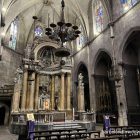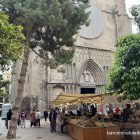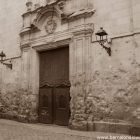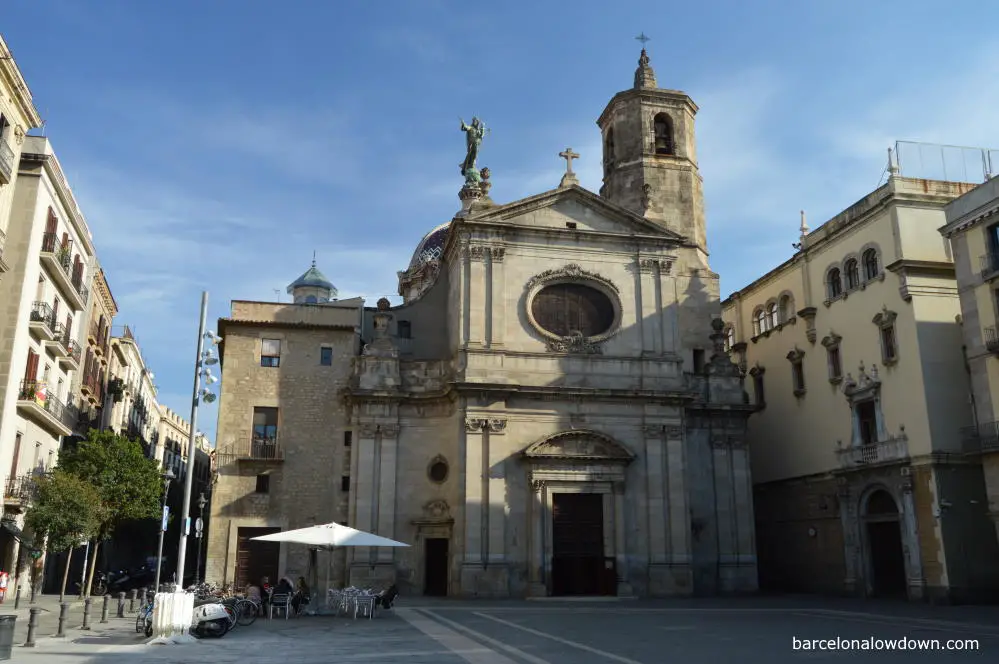
It may not be as well known as Barcelona’s other historic churches, but the Basilica of Our Lady of Mercy (Catalan: La Basílica de la Mare de Déu de la Mercè) is a worthy addition to your list of things to see in the Gothic Quarter.
The basilica’s stunning interior consists of a nave flanked by several small chapels dedicated to Roman Catholic saints, including St. Michael Archangel, St. Anthony Abbot and St. Peter. The nave has twin pulpits and is decorated in typical baroque style, complete with Corinthian columns, crystal chandeliers and plenty of gold leaf.
Above the main altar, a small chapel houses a fourteenth-century statue of La Mercè which looks out at the congregation through a glass window. To the left of the altar, a short flight of steps allows access to see the statue close up.
The building’s exterior is comparatively simple, the most notable features being the octagonal bell tower and the large bronze statue of La Mercè which stands on a dome above the altar. Another interesting detail is the façade of the church of Sant Miquel which was added to the side of the basilica during the nineteenth century.
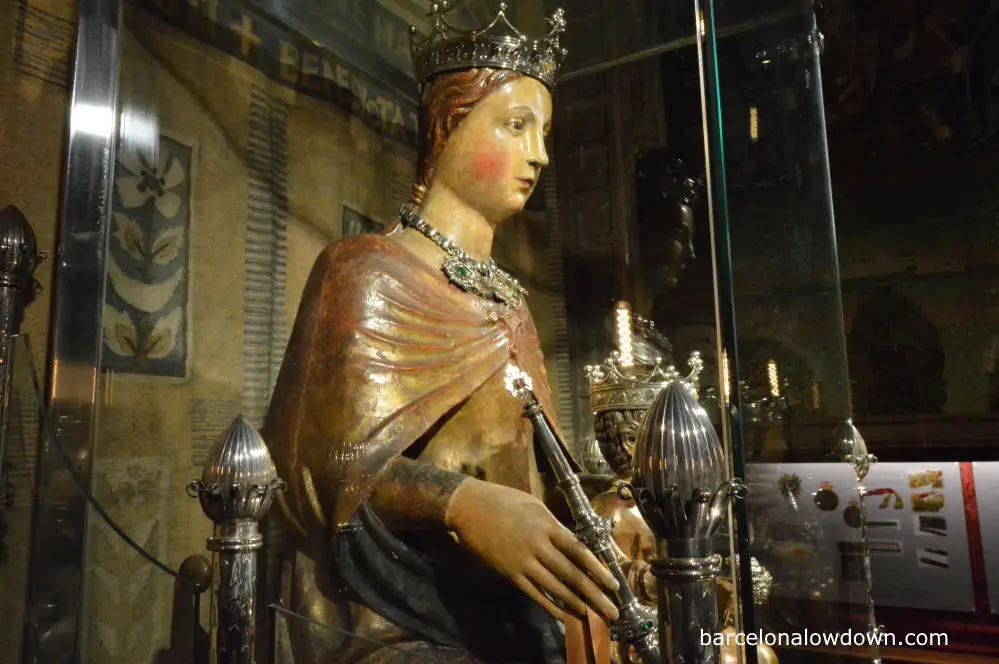
History of the Basilica of La Mercè
The Order of Mercy was formed in Barcelona in 1218, a few months after the Virgin Mary appeared simultaneously to Saint Peter Nolasco and Jaume I (king of Aragon). The order was tasked with rescuing Christians who were taken prisoner during attacks by Moorish armies and pirates from North Africa and Al Andalus.
Initially, the order was housed in a hospital near Barcelona Cathedral. In 1234 they established a new convent with a gothic church on the site of the current basilica.
The church was extended and remodelled throughout the fourteenth century, including the addition of a new altarpiece that incorporated a small chamber to house a statue of La Mercè.
In 1687 La Mercè was declared patron saint of Barcelona (see below) and a silver throne was built for the statue. In 1714, during the siege of Barcelona, the statue of La Mercè was taken to Barcelona Cathedral for safekeeping.
In 1765 the original gothic church was torn down and construction of the current church began. The baroque-style church took ten years to build after which the statue of La Mercè was brought back from the Cathedral and installed in a new altarpiece.
In 1870 the façade of the church of Sant Miquel which had been demolished to make way for the town hall was rebuilt to form one the side of the basilica. In 1888 a new dome was added, topped by a bronze statue of La Mercè.
During the Spanish Civil War, the basilica was gutted by fire and most of the original sculptures and decorations were destroyed. Fortunately, the fourteenth-century statue of La Mercè and a few other religious artefacts were somehow saved and taken into safekeeping. The bronze statue from the roof of the basilica was melted down to make munitions for the Republican Army.
After the war, the basilica was rebuilt and the statue on the roof replaced by a larger version made of metal from statues of Wilfred the Hairy and Ramon Berenguer I. Rebuilding work finished in 1960 when the restoration of the main altar was completed.
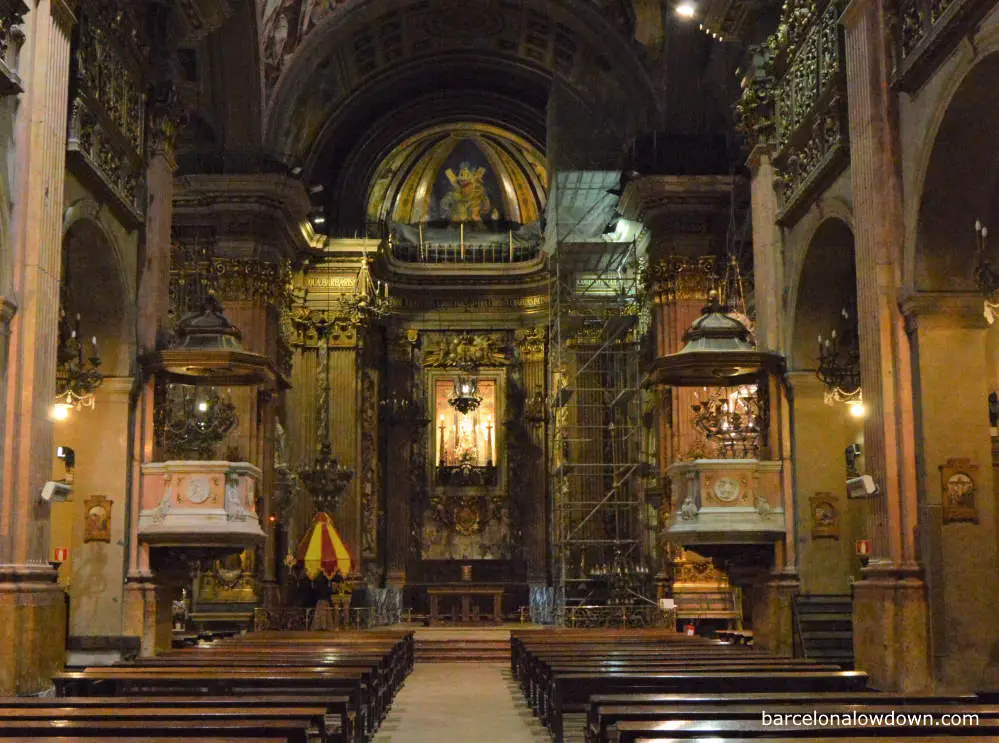
La Mercè co-patron saint of Barcelona
Barcelona has two patron saints: Santa Eulalia and La Virgen de la Mercè.
Santa Eulalia
Santa Eulalia was a young Christian girl from Barcelona who was put to death by the Romans. According to the legend, she was captured while tending her flock of geese and taken before the governor who ordered her to renounce her faith. When Eulalia refused, she was subjected to a series of thirteen cruel tortures, the last of which was crucifixion.
Eulalia was canonised and became the patron saint of Barcelona in 663 AD. The feast day of Santa Eulalia is celebrated on the twelfth of February.
La Virgen de La Mercè
In 1687, Barcelona suffered a severe famine caused by a plague of locusts. Legend has it that the city council asked Our Lady Of Mercy (Catalan: Mare de Déu de la Mercè) to save the city, promising to make her patron saint of Barcelona. When the plague ended, the council kept their promise and La Mercè was proclaimed co-patron saint of Barcelona.
Two centuries later, Pope Pius IX declared that Spanish cities could only have one patron saint, and Barcelona city council chose la Mercè. The decision wasn’t well received, and finally, Santa Eulalia was reinstated as co-patron.
The feast day of La Mercè, which is celebrated on September 24th, is Barcelona’s main public holiday and street parties and other events take place throughout the city. Coincidentally, it often rains in Barcelona during September and if it rains during La Mercè, the rain is said to be the tears of Santa Eulalia. Some say that Eulalia is crying out of sadness, others that she is deliberately spoiling her rival’s party.
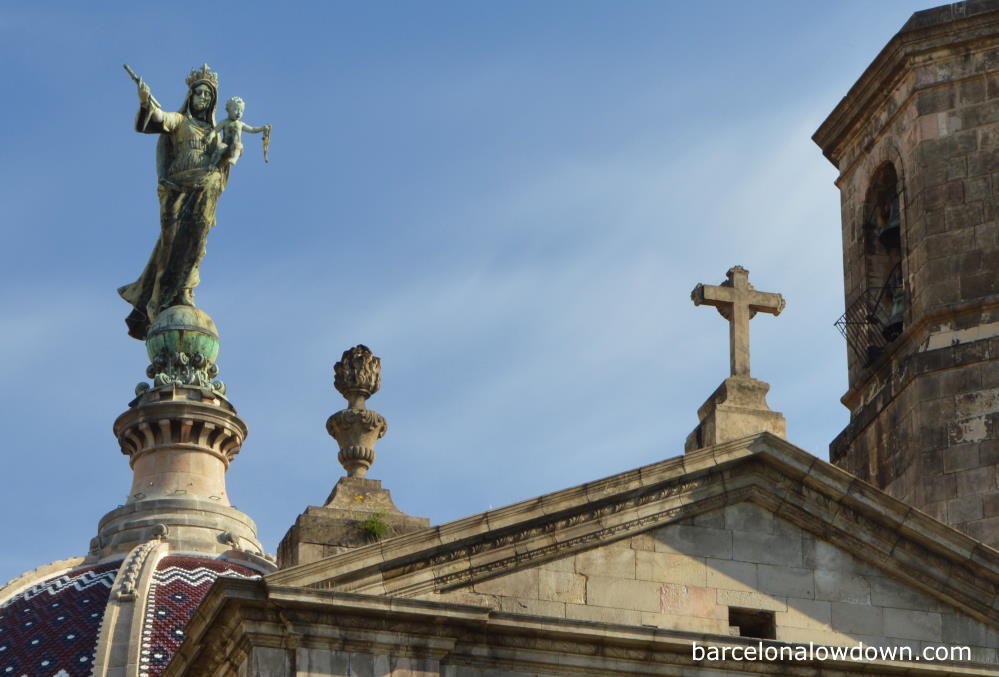
Opening times and Prices
The basilica is open daily from 09:00 to 20:00
Entry: Free of charge
Guided tours are available in Spanish and Catalan.
Location
Plaça de La Mercè, 1
How to get there
The Basilica of La Mercè is located in the Gothic Quarter, close to Las Ramblas and the Columbus Monument.
The nearest metro stops are Drassanes on the L3 (green line) and Barceloneta on the L4 (yellow line).
Other attractions nearby
- Las Ramblas
- Barcelona Waxwork Museum
- The Columbus Monument
- The Port Vell Marina
- Hash Marihuana and Hemp Museum
Map
Plaça de la Mercè, Barcelona

